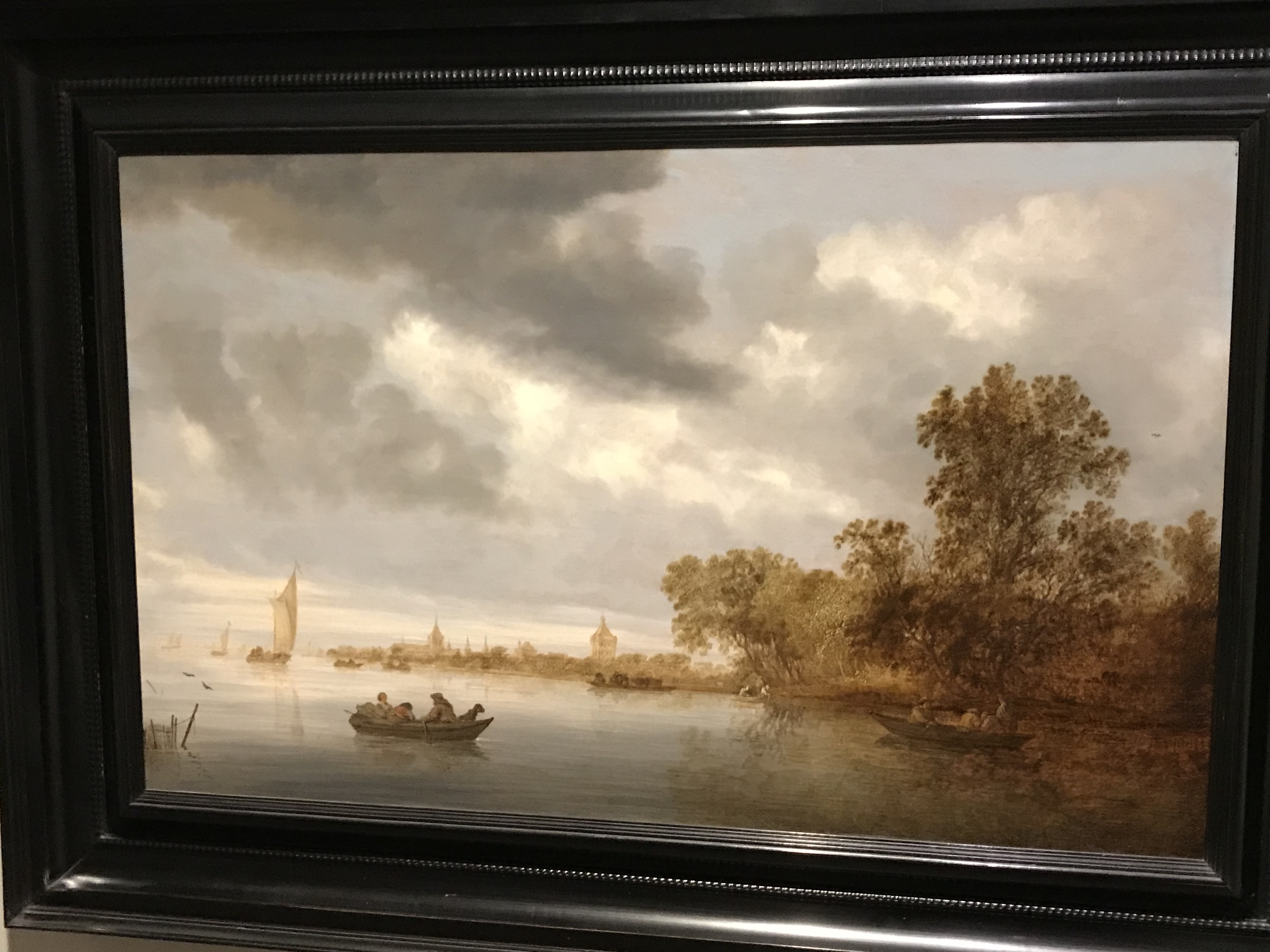The Ackland Art Museum located in Chapel Hill, North Carolina is filled with a wide variety of paintings and works of art that are rich in culture and history. Along with the original intent of the artist when they created their artwork, much of the paintings are open to interpretation by the person viewing it, which is one of the qualities of art that makes it appealing.
The first painting that we looked at was Solomon van Ruysdael’s River Landscape with Fishermen. This painting depicts the landscape of a very serene river with small boats and a town in the background. Overall, this represents the very simple lifestyle that the Dutch people partook in during the 17th century, as trade and other economic activities started to be on the rise. At that time there was a large separation between the wealthy and the poor so this is probably what it would be like for the less economically stable group. A good portion of the painting also has dark clouds pushing out the nice white ones. Although there is no way of knowing Ruysdael’s true intention when he painted those clouds, this could be his way of foreboding troubles that may be occurring in the near future as a result of these new economic activities of the Dutch. Another aspect of this painting that stood out to me is that no one is in the canoe alone. Even if these people don’t seem to have much, they have other people around them that can make a hard days of work a little easier.
The second painting we looked at was Howard Hodgkin’s Looking at the Sea. One of the biggest differences between this painting and the one that was previously looked at, is that this one is more abstract; therefore, it is open to much more interpretation. The brushstrokes and the varying shades of blue make the painting look very chaotic, but the small slivers of gold paint highlight the beauty in all the messiness. The red/orange paint along the edge of the painting make the waves and sea seem more powerful and sort of aggressive. This painting definitely brings the sea to life by giving it a personality. At some parts, like the top of the painting, the sea seems very calm and approachable, while at other parts, like the bottom corner, it seems full of drive and anger.
The first two paintings that we looked at fit into the book of Robinson Crusoe by relating to the idea of the sea. Crusoe was so fascinated with the sea that he willingly threw away his previous life to travel and explore it with no real intention in mind. While one painting is more abstract, the other one clearly shows a real-life scene. I think that these paintings capture the juxtaposition that was consistent throughout Crusoe’s time on the island. At certain moments he was at peace and knew exactly what he was doing on the island, while at other times, it was total chaos in his mind. In the book, there were times when it was almost as if Crusoe had come to accept the island as his new home and the fact that he would probably be lonely for the rest of his life. In contrast, there were other times when he longed for a companion and thought about building a canoe and venturing outside the confines of his island. In a similar fashion, the people in the first painting seem to be okay with their way of life. They seem content with the simple lifestyle they have and don’t appear to be worried about the future. On the other hand, the more abstract painting captures the more adventurous side of Robinson Crusoe who has the motivation and drive to go out and change his condition, even though he doesn’t really take action until other people stumble upon his island and in a way forces him to.


